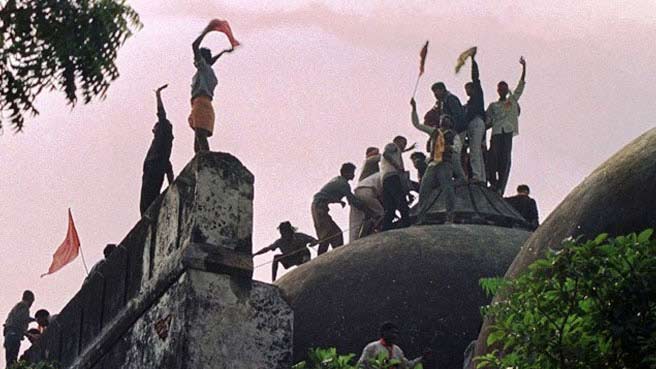It is true that at times we fight with each other and even go after each other’s heads but for a majority of Indians, coexistence isn’t a slogan but a way of life
By Shashi Shekhar for HT

If you read history after doing away with its clichés, then all the mysteries of the world will stand unravelled.
Consider 6 December. The cacophony of voices celebrating it as ‘victory day’ or ‘black day’ may make it difficult to hear or see things clearly. But what you see is not always the entire truth.
The date has a special place in the pages of India’s history—in 1992, Babri Masjid was demolished and in 1956, Bhimrao Ambedkar breathed his last in Delhi. You may ask why am I connecting Ambedkar with Ayodhya? From the outside, these two appear unrelated but the thread of the Indian survival instinct binds the two. Let us find out how.
Baba Saheb, as Ambedkar was popularly known, left the world 61 years ago. At that time, some of his opponents may have thought that his story had reached its culmination. But the revolution that Ambedkar started has refused to die. He was the high priest of a reformist movement which would go on to change the destiny of billions. That is why, even today, Ambedkar occupies a special place in the pantheon of people who influenced India’s political and social discourse.
What Baba Saheb said and did in his lifetime guided millions of Dalits. His endeavour became a medium for bringing a generation hitherto perceived as “unproductive” to the national mainstream. In a country where one’s ancestors decided one’s profession, bringing in these changes wasn’t easy.
I often wonder how India would have been without the caste system. Expert opinion is divided on the answer. Since the question is linked with convention, there has never been a consensus on the answer and never can be. Without hurting anybody’s sentiments, I would submit with utmost humility that the system has given more reasons for people from various castes to be ashamed than to be proud.
Most scholars agree that owing to the caste system, a number of ancient systems of learning has withered away. This provided an opportunity for foreign invaders to subjugate us. Is it certain that the son of an expert doctor will be as skilled in matters of medicine as his father? Will the son of a warrior always turn out to be as brave as him? If this were the case, all the authority of human civilization would become the fiefdom of a few families.
It is obvious that a few selfish politicians have attempted to drag Ambedkar’s name into ideological mud-slinging. This also involves trying to paint him as a symbol of those who opposed Mahatma Gandhi. Despite all the propaganda spread around this falsely created dispute, Ambedkar ushered a non-violent social revolution.
Now let us turn our attention to 1992. The memories of the years from 1989 and 1992 are still fresh in many people’s minds. On one side, crowds of kar sevaks raising raucous slogans could be seen heading to Ayodhya. On the other, it appeared the exercise would divide the nation. When riots began singeing the entire country in the aftermath of the demolition, the naysayers got busy spreading their own insecurities. But they were proved to be wrong. In a few weeks, normalcy was restored in the country. We have a unique capacity to learn from our mistakes and rectify them.
It is true that at times we fight with each other and even go after each other’s heads but Indians are firm believers in letting bygones be bygones and looking forward. For a majority of Indians, co-existence isn’t a slogan but a way of life.
Many of us must be evaluating the 25th anniversary of the Babri demolition, which falls two days from today, from our own individual perspectives. Like always, those seeking to stoke controversy and divisiveness will spice up facts and use them to push their own selfish agendas. Meanwhile, oblivious to these, certain people are busy in the background trying to discover a solution to the dispute.
Don’t be surprised if, within the next two years, you see the temple and the mosque being built at the same time. If that happens, as Indians, we can again proudly declare that our model of coexistence is timeless, eternal and indestructible. If Ambedkar’s life struggle and teachings drive home the message of social harmony, why can’t the city of Ayodhya become a symbol of our coexistence?
This is the lesson that history, too, advises us to follow.
(The article was published on Live Mint written by Shashi Shekhar, editor-in-chief, Hindustan can be reached at @shekharkahin.

